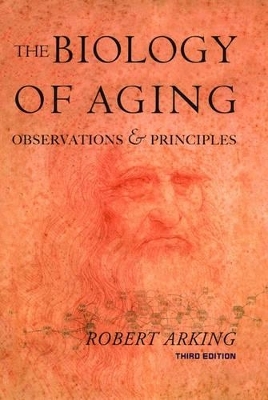
The Biology of Aging
Oxford University Press Inc (Verlag)
978-0-19-516739-9 (ISBN)
Robert Arking's Biology of Aging, 3rd edition, is an introductory text to the biology of aging which gives advanced undergraduate and graduate students a thorough review of the entire field. His prior two editions have also served admirably as a reference text for clinicians and scientists. This new edition captures the extraordinary recent advances in our knowledge of the ultimate and proximal mechanisms underlying the phenomenon of aging. As a result, six important conceptual changes are included here:
· Clarified distinctions between the biological mechanisms involved in longevity determination and those involved in senescent processes. · A new conceptual framework around which we can organize all the new facts about aging. This will assist readers to make sense of the information and use the data to form their own ideas. · Increased knowledge of aging cells has lead to new ideas on how a cell transits from a healthy state to a senescent state, while still allowing for high levels of intra- and inter-specific variability. · Discussion of senescent mechanisms assists the reader to understand that aging is a non-programmatic loss of function, likely arising from the loss of regulatory signals, and so is modifiable in the laboratory. · Because the standard evolutionary story does not fully explain the evolution of social organisms, this edition also includes recent work dealing with intergenerational resource transfers. · Lastly, if aging mechanisms are plastic, then the demand to move these anti-aging interventions into the human arena will inevitably grow. A discussion of the biological and ethical arguments on both sides of the question frames the question in an appropriate manner.
The mass of data related to aging is summarized into fifteen focused chapters, each dealing with some particular aspect of the problem. The last two chapters integrate all this material into a coherent view of how the relevant biological processes change over the life span. This view is expressed in two non-technical figures (you might say that the whole book exists to fully support Figs 9-4 & 14-9), whose meanings are elucidated as the reader progresses through the book.
Robert Arking is a Professor of Biological Sciences at Wayne State University. His research involves the mechanisms underlying the onset of senescenece in Drosophila.
PART I: What Is Aging?
1: Perspectives on Aging
2: Measuring Age-related Changes in Populations
3: Measuring Age-related Changes in Individuals
PART II: Why Do We Age?
4: Evolutionary and Comparative Aspects of Longevity and Senescence
PART III: How Do We Age?
5: Human Aging
6: Altering Aging: Interventions That Modify Longevity and Senescence
7: Genetic Determinants of Longevity in Animal Models
8: Genetic and Social Aspects of Aging in Humans
PART IV: What Is the Mechanistic Basis of Aging and Senscence?
9: Mechanisms Underlying the Transition from Health to Senescence
10: Stochastic Theories of Aging
11: Systemic Theories of Senescence
12: Senescence as a Breakdown of Intracellular Regulatory Processes
13: Senescence as a Breakdown of Intercellular Regulatory Processes
PART V: An Integrated Theory of Aging
14: A Theory of Aging over the Life Span
PART VI: What Can We Do about Aging?
15: Aging-related Research and Its Impact on Society
| Erscheint lt. Verlag | 23.3.2006 |
|---|---|
| Zusatzinfo | Numerous tables and line drawings |
| Verlagsort | New York |
| Sprache | englisch |
| Maße | 178 x 254 mm |
| Gewicht | 1284 g |
| Themenwelt | Naturwissenschaften ► Biologie ► Humanbiologie |
| ISBN-10 | 0-19-516739-2 / 0195167392 |
| ISBN-13 | 978-0-19-516739-9 / 9780195167399 |
| Zustand | Neuware |
| Informationen gemäß Produktsicherheitsverordnung (GPSR) | |
| Haben Sie eine Frage zum Produkt? |
aus dem Bereich


